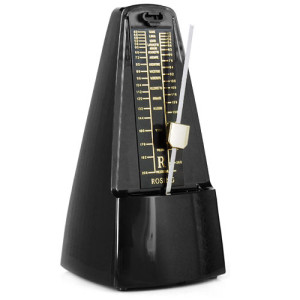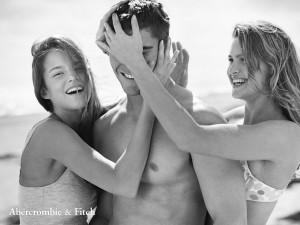Retail Music: The Psychology Behind The Beats
December 3, 2014 11:57 am
“If we went into shops only when we needed to buy something, and if once in there we bought only what we needed, the economy would collapse – boom.”
– Paco Underhill, CEO Envirosell
 As customers, why do we believe we overspend?
As customers, why do we believe we overspend?
Lack of will power? Too good of a sale to turn down? Uncontrollable splurge on payday?
We rarely, if ever, take into consideration the subliminal influences that effect how much money and time we spend in any given store.
Retailers invest an extortionate amount of time and money in professionals who understand the mental processes behind customer behavior, which isn’t surprising given that 50% of purchases in supermarkets are impulse buys alone.
From display strategies and product positioning to lighting and scent arousal, retailers have enforced countless measures to ensure customers will literally shop ’til they drop.
One exceptionally strong psychological influence on consumer behaviour that can be tweaked and experimented with by any retailer is Music.
Perceived by consumers as meaningless entertainment, retail music is fact the subtle pied piper of the retail industry, subconsciously influencing how much time consumers spend in store, how much money they spend, and of course what age group is drawn in.
Psychology Behind the Music – The 3 Factors
1. Tempo
 Numerous in-depth studies have been carried out over the last couple of decades to learn the subconscious effects of retail music on buying behaviour.
Numerous in-depth studies have been carried out over the last couple of decades to learn the subconscious effects of retail music on buying behaviour.
Milliman, along with other scholars found that the tempo of in-store music directly influenced (a) the amount of time a customer spends in a store (b) overall sales (c) customers’ perception of time.
Studies found that playing slow paced music in a retail setting resulted in:
- Consumers spending 38% more time in store overall
- A significant increase in product sales (32%) in comparison to when fast paced music was played
- Time-spans perceived to be shorter by customers when filled with slow paced music
Following this, slow paced music was also tried and tested in a restaurant setting. Findings found that:
- Customers spent significantly more time in the restaurant overall
- Customers spent more time eating
- Customers spent considerably more money on alcohol (51% increase)
The science behind it claims that fast music leads to higher levels of arousal, resulting in customers moving at a faster pace and spending less time in a given store or restaurant.
Consequently, slow paced music slows down the speed at which customers shop and eat, leading to an increase in browsing time, an increase in items purchased and a more relaxing environment overall.
2. Volume
A combination of studies carried out by Smith and Curnow as well as Yalch and Spangenberg demonstrate that the volume level of music has a profound effect on consumer behaviour, influencing (a) overall time spent in a store (b) customers’ perception of the time they spend in a store (b) sales per minute
Experiments testing different volume variations found that:
- Overall, less time is spent in stores playing loud music in comparison to soft music
- Middle-aged (25-49) shoppers spent more and shopped longer when foreground music was played
- Older shoppers (over age 50) shopped longer and purchased more when background music was played
- Older shoppers felt they had spent more time in a store with music playing in the foreground
- Younger shoppers felt they had spent more time shopping in a store with music playing in the background
- Sales per minute is higher when loud music is played
If you, along with 90% of the retail industry, are finding yourself in constant debates with colleagues over the volume level, these insightful facts should definitely guide you towards an educated agreement, depending of course on whether you want your customers to linger or make a quick exit.
3. Genre
 It’s safe to say that genre is the most noticeable element of music in any walk of life. Customers are happily bobbing around aisles to their favourite song, oblivious to the fact that behind the beats lies a canny ulterior motive.
It’s safe to say that genre is the most noticeable element of music in any walk of life. Customers are happily bobbing around aisles to their favourite song, oblivious to the fact that behind the beats lies a canny ulterior motive.
The most noted genre studies involve Top 40 Pop music versus Classical music experiments carried out in both retail and restaurant settings.
Classical versus Pop was tested out in various wine retailers.
The findings:
- Customers spent more money when classical music was played
- A significant increase in expensive wine sales when classical music was played
Country-specific music:
- French wines outsold German wines when French music was played
- German wines outsold French wines when German music was played
Classical versus Pop music was also tested in a restaurant setting. Results demonstrated:
- Sales increased when classical music was played in comparison to Pop music or no music
- Customers bought more expensive items when classical music was played
- Customers generally spent longer in a restaurant when classical music was played due to the predominantly fast-paced nature of pop music.
If we were to analyse the behaviour of these experiments, it can be said that customers can often be persuaded to conform to the nature of background music when making purchases. Classical music is associated with refined, expensive taste, therefore consumers purchase accordingly. The same can be said for country-specific music such as the German versus French wine study.
conform to the nature of background music when making purchases. Classical music is associated with refined, expensive taste, therefore consumers purchase accordingly. The same can be said for country-specific music such as the German versus French wine study.
Some other useful music facts that derived from retail studies are:
- Playing festive music leads to a significant increase in festive product sales
- Customers are more likely to purchase products advertised in conjunction with music they find appealing
- A shorter wait time is perceived when appealing music is played
- Consumers spend longer shopping when listening to familiar music, however it can often distract from the objective of buying
Music and Brand Identity – Abercrombie and Fitch
 Everyone who’s walked past an Abercrombie and Fitch store can’t help but notice the loud club music bellowing from the ceilings. After all this psychology talk, you’re probably questioning the motive behind the sensory overload. The answer – brand image.
Everyone who’s walked past an Abercrombie and Fitch store can’t help but notice the loud club music bellowing from the ceilings. After all this psychology talk, you’re probably questioning the motive behind the sensory overload. The answer – brand image.
Studies show that younger shoppers are likely to withstand loud, current music whereas older shoppers tend to avoid it. The motive behind the party scene is to attract only their young, target consumers, thus keeping their image young and fresh. Psychology Today claims that shoppers also make more impulsive purchases when they’re overstimulated, therefore the added motive of the loud, club music is that the younger shoppers who flock to the store’s over-stimulating environment will have weakened self-control.
Hat’s off to the brains behind Abercrombie & Fitch!
Summing up the motives behind the music, if you run a fast paced store or restaurant that profits from speedy turnover, get your hands some loud, fast tempo, up-beat music.
On the other hand, if you prefer customers to stay a little longer and indulge a little more, go for slower, softer music.
So there you have it, your degree in Retail Music Psychology in under 5 minutes. 
Categorised in: News


